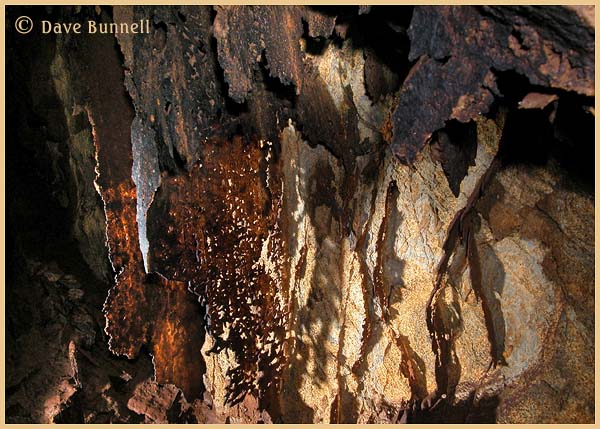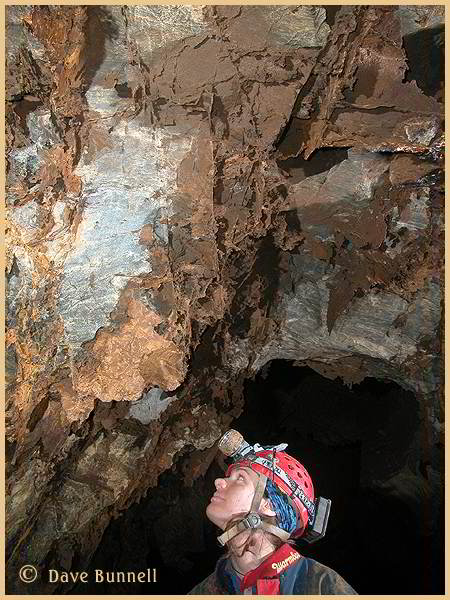
| Boxwork consists of a network of thin blades of crystalline
material protruding from bedrock walls, ceilings, or clay floors. The
material is generally more resistant than the host rock, and is typically
calcite. Probably the most extensive boxwork deposits known are in Wind
Cave National Park in South Dakota (top). In the photos below (from Black Chasm Cavern, California) we see unusually
large boxwork "sheets" extending from the walls that are so
paper-thin as to be translucent to a flash positioned behind them. Much
of the largest one has had so much material dissolved that it forms a
lacework, probably associated with seasonal water fluctutations that inundate
it. The second image shows Dr. Hazel Barton with a ceiling desnely covered
with large blades of boxwork, many of them caked from mud left by former
stands of the lake beneath it, lwhich varies seasonally with fluctutations
of the local water table..
One way boxwork may form is by calcite filling veins in the bedrock, which later weathers away to leave the more resistant calcite. This would occur during the phreatic phase, when the cave is filled with water. Another type of boxwork may occur as a more traditional speleothem, in air-filled caves. In this view, calcite solutions seep into shallow cracks and deposit as for other speleothm forms, by degassing of carbon dioxide. |
![]()



![]()
| Back to: | |
 |
Created:December, 1998 Author: Dave Bunnell |